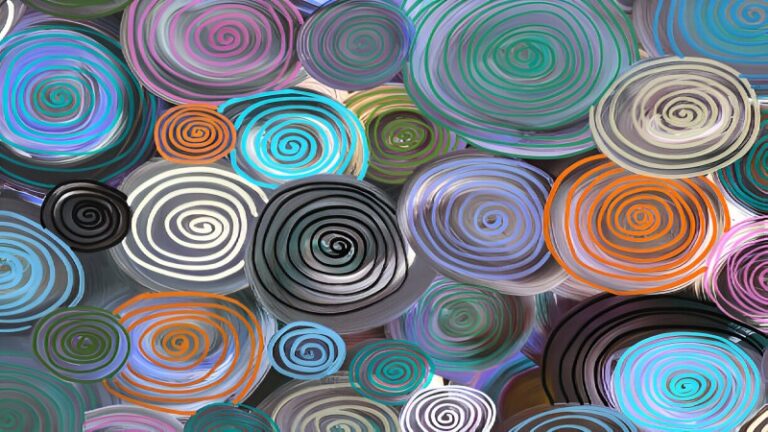The term avant-garde art often conjures up images of radical, boundary-pushing creations – from fragmented Cubist forms to the provocative installations of Dada and Surrealism. Yet, to fully grasp its enduring power, we must consider how this rebellious spirit continues to resonate today, especially through avant-garde movements that challenge established norms. From the early 20th century, the avant-garde has always been about stirring viewers to see, think, and feel differently. This defiant ethos remains essential, offering a renewed understanding of experimental methods that merge activism and aesthetics, delivered directly to wider, more diverse audiences than ever before.
From Historical Roots to Present Disruptions
The term avant-garde, originally a French military term for the advance guard, fittingly describes artists who bravely venture into unfamiliar territory for the sake of innovation. Figures like Pablo Picasso and Georges Braque reconfigured perspectives, while Dadaists such as Tristan Tzara and Hugo Ball confronted the status quo after the horrors of World War I, believing that if society’s structures had collapsed, art should likewise reject old standards.
Today, this rebellious spirit finds new forms of expression. Contemporary artists are leveraging performance pieces, conceptual installations, and new media to challenge our interactions and spark dialogues on urgent themes like climate justice, racial equity, and gender inclusivity. The rise of social media has been pivotal, enabling creators to bypass traditional gatekeepers and deliver their works directly to a global audience, fostering a heightened attention for experimental art.
Amplifying Marginalized Voices
A crucial aspect of contemporary avant-garde is its deep engagement with intersectionality. This acknowledges that gender, race, ability, sexuality, and class operate in tandem, shaping individual experiences and informing artistic expression. Historically, figures like Hannah Höch, a Dada pioneer, faced intense scrutiny as one of the few women in a male-dominated collective, while Claude Cahun’s surrealist photography explored identity and gender fluidity long before such topics were mainstream.Today, artists at the intersection of multiple identities—such as Afro–Latinx non-binary artists—often face compounded barriers to representation.
Technology as a Catalyst for Disruption
The digital age has profoundly influenced how emerging artists and avant-garde movements operate and disseminate their work. Technology is no longer just a tool but an integral part of the creative process, amplifying marginalized voices and fostering immersive experiences.
Key Technological Impacts
| Technology Type | Impact on Avant-Garde Art | Examples/Applications |
| Digital Art & VR/AR | Creates immersive, interactive experiences; replicates injustices. | Virtual reality installations, 3D printing, interactive apps. |
| Social Media | Enables instant sharing, open commentary, global dialogues. | Artists promoting work, protest art campaigns, bypassing traditional gallery systems. |
| Blockchain/NFTs | Redefines ownership and monetization of digital art. | New income streams for digital artists, fostering a new collecting paradigm. |
The Interwoven Strands of Art, Activism, and the Environment
The historical overlap between avant-garde art and social movements is undeniable. From the Civil Rights era’s Black Arts Movement to intersectional feminism, creative pioneers have used provocative works to illuminate injustices. This fusion of activism and experimental art remains a core attribute of contemporary avant-garde practice. Environmental concerns have also increasingly permeated the conversation. Artists like Olafur Eliasson engage with climate disruption by showcasing melting glaciers or introducing natural elements into galleries. Other practitioners dedicate themselves to site-specific performances in polluted areas, highlighting urgent ecological concerns for global audiences.
Nurturing the Next Wave
While the inventive surge of new art is inspiring, established museums and art schools can sometimes be reluctant to fully integrate forms of expression that challenge conventional norms, often due to institutional budgets or market-driven motivations. However, each successful experiment paves the way for broader acceptance.
Crucially, supporting emerging artists and avant-garde movements means rethinking how art is produced, distributed, and critiqued. Economic inequalities, rising education costs, and lack of accessible studio spaces present significant hurdles. Collectives that share resources and knowledge are vital, expanding the influence of avant-garde art far beyond its typical strongholds.
Consider these strategies to support the next generation of artistic disruptors:
- Support Local Galleries: Seek out smaller, independent creative spaces that foster inclusive spirits and showcase diverse emerging voices.
- Attend Independent Exhibitions: Engage directly with artists and their work outside mainstream institutions.
- Follow Artists on Social Media: Connect with creators who reflect intersectional values and promote their work.
- Encourage Young Creatives: Offer tools and encouragement for young people to engage in creative expression and push boundaries.
Conclusion
The essence of avant-garde art lies in moments of collective epiphany, when viewers realize they have witnessed something that alters their perspective. These works, whether addressing oppression, sexism, racism, or environmental destruction, are not indulgent displays but catalysts for reconsidering how we inhabit this planet together. The re-emergence of experimental art in our cultural conversations serves as an invitation: to reflect on the political, economic, and technological transformations that affect our lives. It’s a powerful reassurance that every time a system tries to confine creativity, someone will burst through with a fresh technique or perspective that disrupts what we think we know.
By embracing this dynamic spirit of disruption, supporting independent voices, we ensure that the radical legacy of avant-garde movements continues to illuminate new paths toward equity, understanding, and genuine social progress.
Frequently Asked Questions (FAQs)
What is avant-garde art?
Avant-garde art refers to art that is innovative, experimental, and pushes the boundaries of conventional artistic expression, often challenging established norms and traditions.
How do contemporary artists contribute to avant-garde movements?
Contemporary artists continue the avant-garde tradition by using new media, performance, and conceptual installations to address current social issues and redefine how audiences interact with art.
What role does intersectionality play in modern avant-garde art?
Intersectionality in modern avant-garde art means that artists explore how various aspects of identity (like race, gender, and class) intersect, amplifying marginalized voices and challenging traditional power structures in the art world.
How has technology influenced emerging avant-garde art?
Technology, including AI, VR, 3D printing, and social media, has become an integral part of avant-garde art, enabling immersive experiences, global dissemination, and new forms of creative expression.
Why is activism often integrated into avant-garde art?
Activism is integrated because avant-garde artists often aim to use their work to comment on and challenge social, political, and environmental injustices, sparking dialogue and catalyzing change.
How can I support emerging artists in avant-garde movements?
You can support them by visiting local galleries, attending independent exhibitions, following artists on social media, and encouraging young creatives to explore experimental art forms.
What is the fresh gaze mentioned in the article’s title?
The fresh gaze refers to a new perspective on avant-garde art, emphasizing how its rebellious spirit is still highly relevant today through contemporary artists who merge activism and aesthetics to address modern complexities.
Are avant-garde art movements only found in major cities?
While major institutions showcase avant-garde art, the article highlights that significant boundary-breaking work is also happening in smaller galleries and local communities, often led by diverse and inclusive groups of artists.


